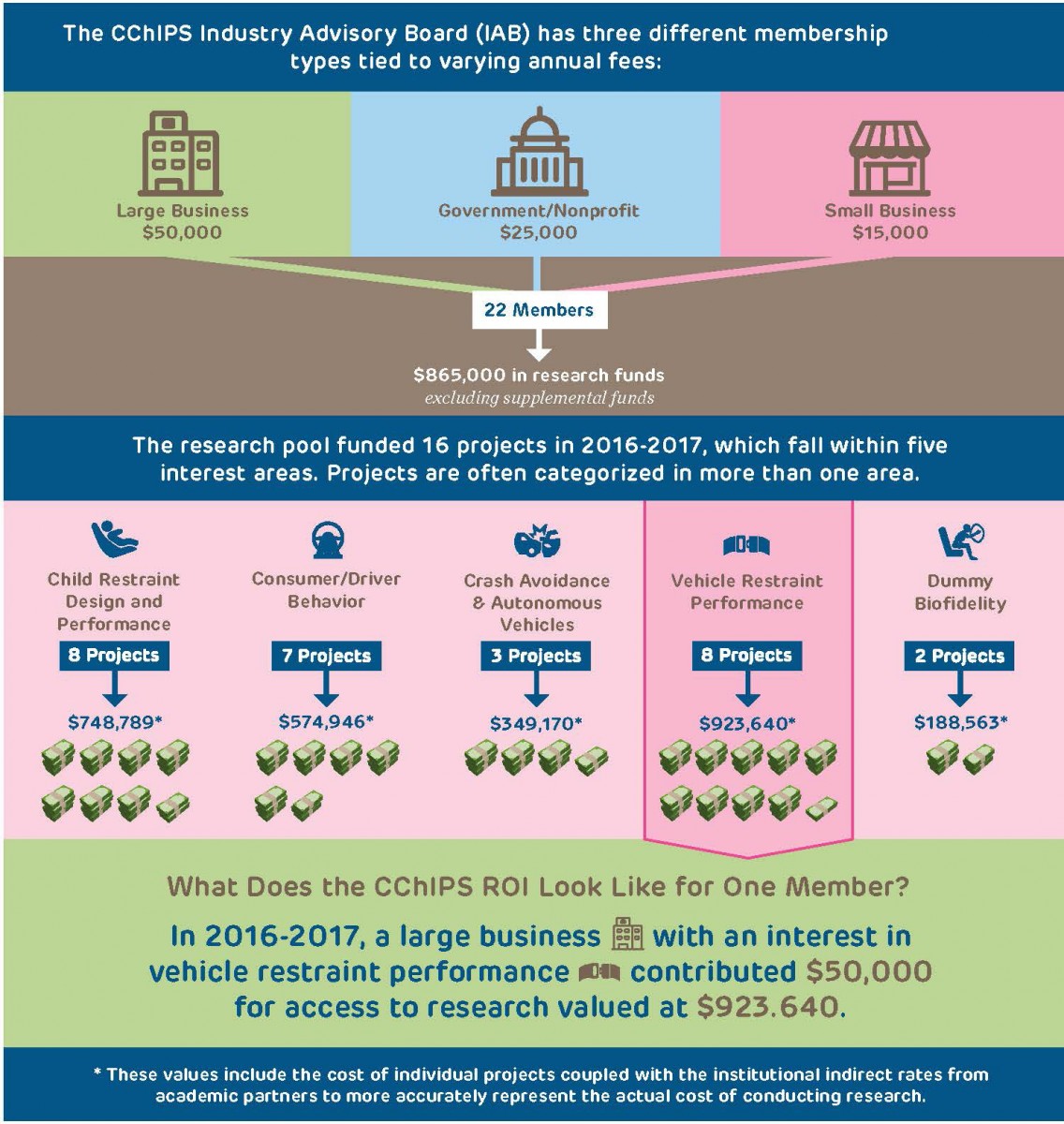HOW CAN WE HELP YOU? Call 1-800-TRY-CHOP
In This Section
CChIPS' Annual Report Highlights Consortium's Unique Synergy
 The rapid translation of research results into new products, policies, and programs is a key part of the Center for Child Injury Prevention Studies’ (CChIPS) mission to spur innovations that keep children safe and healthy.
The rapid translation of research results into new products, policies, and programs is a key part of the Center for Child Injury Prevention Studies’ (CChIPS) mission to spur innovations that keep children safe and healthy.
Each year, the Industry Advisory Board (IAB) of the CChIPS funds a portfolio of child safety-focused research projects. During the 2016-2017 CChIPS project year, the IAB funded 13 completed projects, spanning areas of focus including child-restraint design and performance, consumer/driver behavior, crash avoidance and autonomous vehicles, vehicle restraint performance, and crash test dummy biofidelity. Snapshots of these projects are available in the newly released 2017 CChIPS Annual Report: “Safe and Sound.”
For example, Kristy Arbogast, PhD, co-scientific director of the Center for Injury Research and Prevention (CIRP),is the principal investigator of a multi-year project that involves testing different features of forward-facing child-restraint systems (car seats) and how each provides protection in oblique impacts. This focus is driven by interest in protection in side impact crashes; in the real world, those crashes are more likely oblique than directly lateral. Now in its third year, the study focused on examining the performance of the three different lower attachment methods by which car seats are fixed to the vehicle anchor points without the use of vehicle seat belts. One important finding across all three years of research is that the child seat kinematics were improved with the use of a tether.

In another CChIPS study, CIRP research scientists Helen Loeb, PhD, and Aditya Belwadi, PhD, used CHOP’s advanced driving simulator to assess drivers’ interactions with self-driving technology. Currently, there are many unknowns about how the transition is made from manual mode to autonomous mode and back to manual mode. A pilot study with a small sample size of eight teens and four adults showed some surprising early results: The female participants were better able to avoid crashing than were the male participants, and more teen participants experienced simulated crashes than did adult participants.
Full abstracts for each project are available on the CChIPS website. The report also covers how CChIPS and their partner research site at The Ohio State University approach return on investment, supplemental research projects, and training future industry scientists. It’s evident how passionate CChIPS scientists are about this work and how much they value the input and expertise of their industry mentors on the IAB. This synergy is what makes CChIPS such a unique consortium.